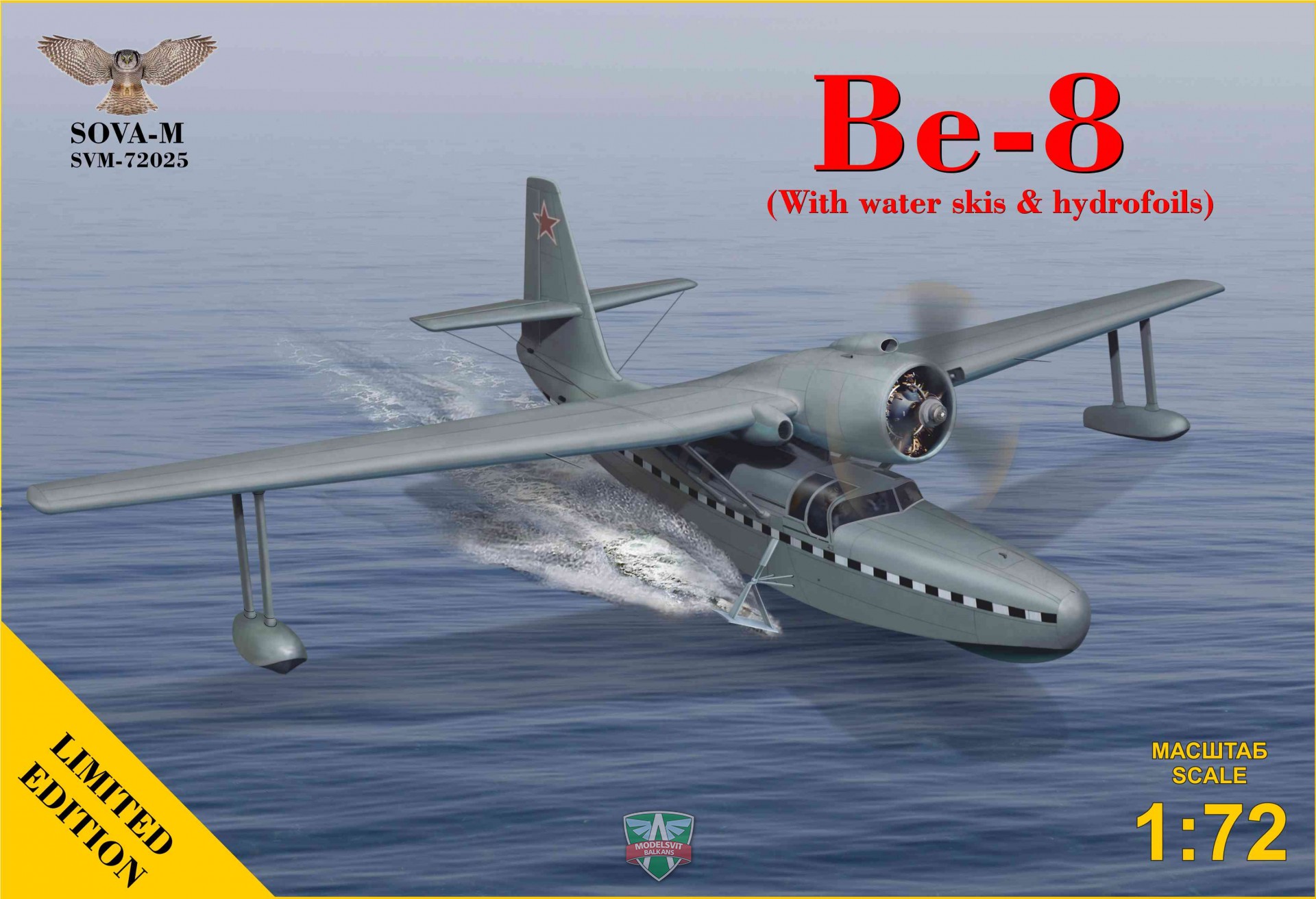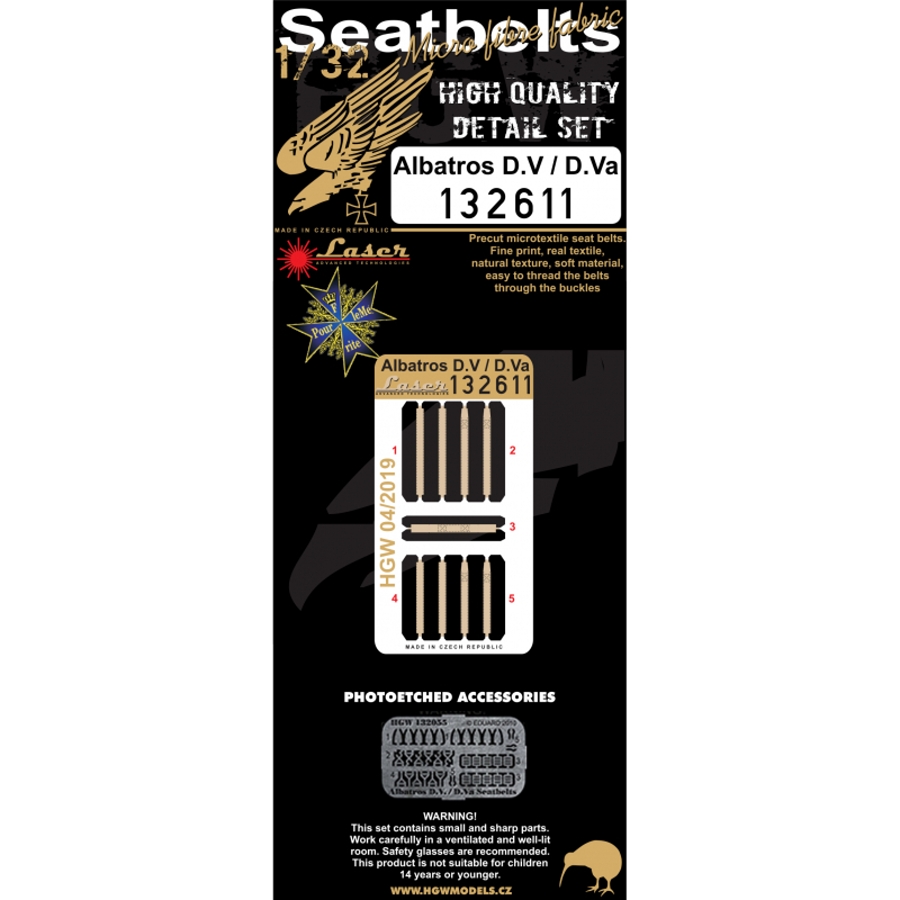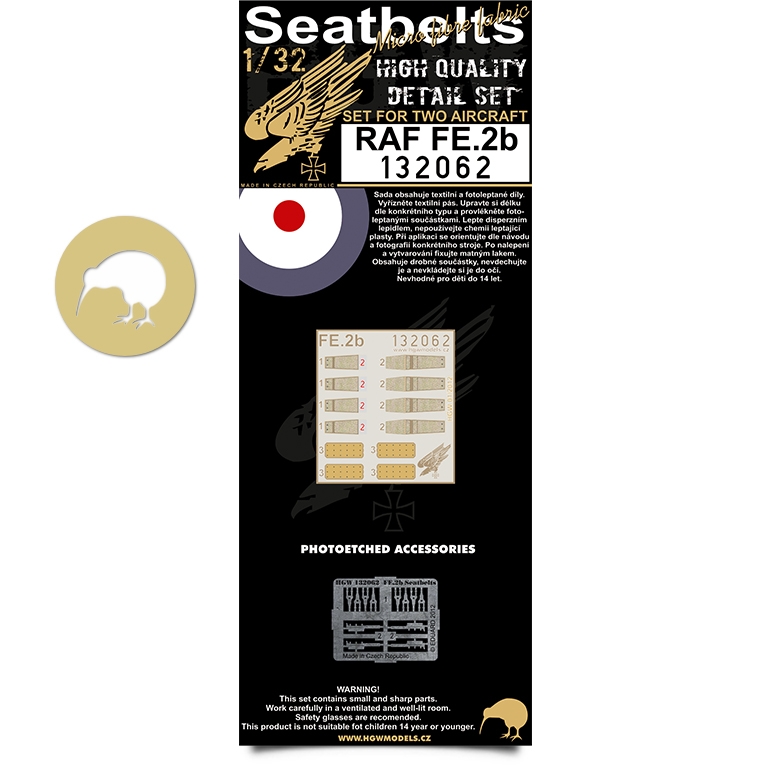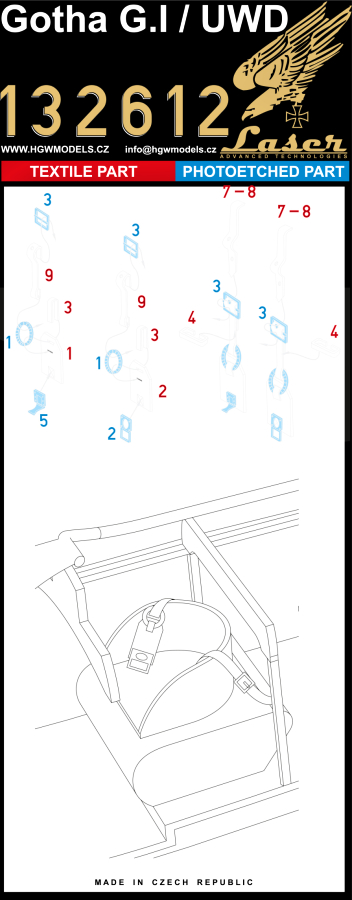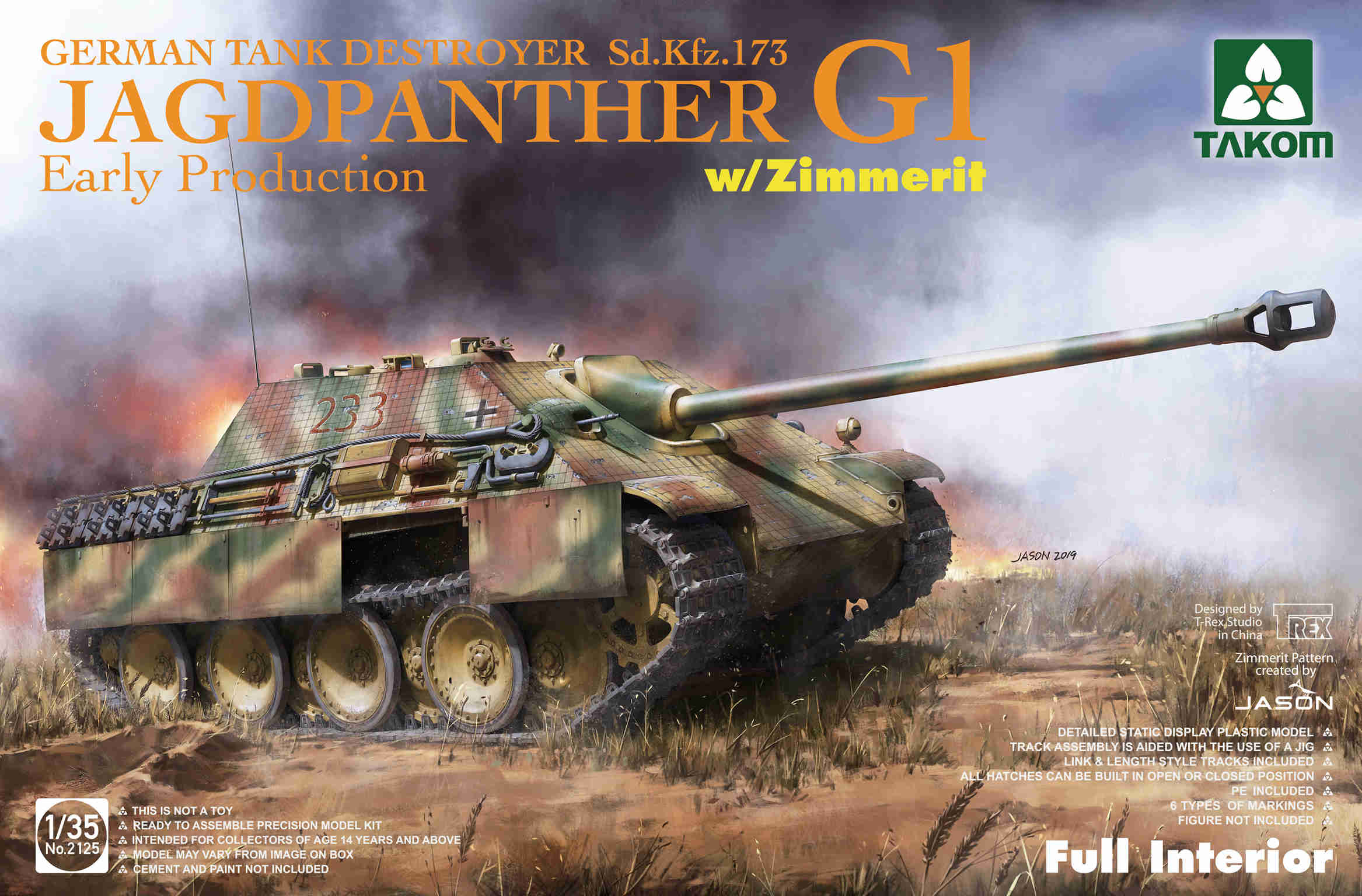Modely
Celkem 74 produktů
1/72 KDA-2 type 88 light bomber. The Beriev Be-8 (USAF/DoD reporting name “Type 33”, NATO reporting name “Mole”), was built by the Soviet Beriev OKB in 1947. It was a passenger/liaison amphibian aircraft with a layout similar to the Be-4 but substantially larger and heavier. It was a single engine parasol with the wing installed on a thin pylon and a pair of short struts. Compared to the Be-4, the Be-8 was equipped with retractable landing gear, and pilot and passenger cabins had heating utilizing engine heat. The Be-8 was intended as a civil aircraft and carried no armament. First flight was on December 3, demonstrating good performance. Two experimental aircraft were built, and one was demonstrated during 1951 Soviet Aviation Day at Tushino.One of Be-8 was equipped with hydrofoils, developed at TsAGI. These “Underwater Wings” were installed on landing gear struts and pushed aircraft above the water well before it could be done by the wing lift force. As a result, takeoff was much easier and imposed less punishment on the hull from the waves. Despite very effective during takeoff hydrofoils had negative impact on flight speed. Construction of retractable hydrofoils was not ready, and the concept did not find practical applications.
1/72 KDA-2 type 88-1 scout. The Beriev Be-8 (USAF/DoD reporting name “Type 33”, NATO reporting name “Mole”), was built by the Soviet Beriev OKB in 1947. It was a passenger/liaison amphibian aircraft with a layout similar to the Be-4 but substantially larger and heavier. It was a single engine parasol with the wing installed on a thin pylon and a pair of short struts. Compared to the Be-4, the Be-8 was equipped with retractable landing gear, and pilot and passenger cabins had heating utilizing engine heat. The Be-8 was intended as a civil aircraft and carried no armament. First flight was on December 3, demonstrating good performance. Two experimental aircraft were built, and one was demonstrated during 1951 Soviet Aviation Day at Tushino.One of Be-8 was equipped with hydrofoils, developed at TsAGI. These “Underwater Wings” were installed on landing gear struts and pushed aircraft above the water well before it could be done by the wing lift force. As a result, takeoff was much easier and imposed less punishment on the hull from the waves. Despite very effective during takeoff hydrofoils had negative impact on flight speed. Construction of retractable hydrofoils was not ready, and the concept did not find practical applications.
1/72 KDA-2 type 88-2 scout. The Beriev Be-8 (USAF/DoD reporting name “Type 33”, NATO reporting name “Mole”), was built by the Soviet Beriev OKB in 1947. It was a passenger/liaison amphibian aircraft with a layout similar to the Be-4 but substantially larger and heavier. It was a single engine parasol with the wing installed on a thin pylon and a pair of short struts. Compared to the Be-4, the Be-8 was equipped with retractable landing gear, and pilot and passenger cabins had heating utilizing engine heat. The Be-8 was intended as a civil aircraft and carried no armament. First flight was on December 3, demonstrating good performance. Two experimental aircraft were built, and one was demonstrated during 1951 Soviet Aviation Day at Tushino.One of Be-8 was equipped with hydrofoils, developed at TsAGI. These “Underwater Wings” were installed on landing gear struts and pushed aircraft above the water well before it could be done by the wing lift force. As a result, takeoff was much easier and imposed less punishment on the hull from the waves. Despite very effective during takeoff hydrofoils had negative impact on flight speed. Construction of retractable hydrofoils was not ready, and the concept did not find practical applications.
1/72 Be-8 amphibian aircraft (with water skis & hydrofoils). The Beriev Be-8 (USAF/DoD reporting name “Type 33”, NATO reporting name “Mole”), was built by the Soviet Beriev OKB in 1947. It was a passenger/liaison amphibian aircraft with a layout similar to the Be-4 but substantially larger and heavier. It was a single engine parasol with the wing installed on a thin pylon and a pair of short struts. Compared to the Be-4, the Be-8 was equipped with retractable landing gear, and pilot and passenger cabins had heating utilizing engine heat. The Be-8 was intended as a civil aircraft and carried no armament. First flight was on December 3, demonstrating good performance. Two experimental aircraft were built, and one was demonstrated during 1951 Soviet Aviation Day at Tushino.One of Be-8 was equipped with hydrofoils, developed at TsAGI. These “Underwater Wings” were installed on landing gear struts and pushed aircraft above the water well before it could be done by the wing lift force. As a result, takeoff was much easier and imposed less punishment on the hull from the waves. Despite very effective during takeoff hydrofoils had negative impact on flight speed. Construction of retractable hydrofoils was not ready, and the concept did not find practical applications.
1/32 Albatros D.V / D.Va - Fabric Seat Belts - pre-cut (laser) Wingnut Wings. Textile seat belts designed for aircraft Albatros D.V / D.Va by Wingnut Wings. Belts are made from real microfibre and in combination with included photo etched buckles they look highly realistic. This product is available in 1/32 scale. HGW models SEATBELTS in 1:32 scale - this set is designed for Wingnut Wings kits textile sheeting, metallic buckles it is possible to make seat belts fully functional - un/buckle, un/fasten them made by special micro-textile foil set contains seat belts for 2 single-seater aeroplanes textile parts are prepared to using filters - it leads to darkening shades - and these are also waterproofedand resistant to normal nonaggresive modeller preparations photo-etched parts were developed in cooperation with Eduard company INSTRUCTIONS This set contains printed and photoetched parts. Choose appropriate shade of belt and trim on dotted line using very sharp knife. Trim to required length according to the type of seatbelt. Using fingers munch into little ball. Flatten out and thread through photoetched parts. Glue using white glue, do not use chemical glue that eches plastic. When applying, look at photos of cockpit of individual machines. After glued and shaped, paint with matt varnish.
1/32 RAF FE.2b - Fabric Seat Belts - 2 sets Wingnut Wings. Textile seat belts designed for aircraft RAF FE.2b by Wingnut Wings. Belts are made from real microfibre and in combination with included photo etched buckles they look highly realistic. This product is available in 1/32 scale. HGW models SEATBELTS in 1:32 scale - this set is designed for Wingnut Wings kits textile sheeting, metallic buckles it is possible to make seat belts fully functional - un/buckle, un/fasten them made by special micro-textile foil set contains seat belts for 2 single-seater aeroplanes textile parts are prepared to using filters - it leads to darkening shades - and these are also waterproofedand resistant to normal nonaggresive modeller preparations photo-etched parts were developed in cooperation with Eduard company INSTRUCTIONS This set contains printed and photoetched parts. Choose appropriate shade of belt and trim on dotted line using very sharp knife. Trim to required length according to the type of seatbelt. Using fingers munch into little ball. Flatten out and thread through photoetched parts. Glue using white glue, do not use chemical glue that eches plastic. When applying, look at photos of cockpit of individual machines. After glued and shaped, paint with matt varnish.
1/32 Gotha G.I / UWD - Fabric Seat Belts - pre-cut (laser) Wingnut Wings. Limited edition exclusive for Art Scale Textile seat belts designed for aircraft Albatros D.V / D.Va by Wingnut Wings. Belts are made from real microfibre and in combination with included photo etched buckles they look highly realistic. This product is available in 1/32 scale. HGW models SEATBELTS in 1:32 scale - this set is designed for Wingnut Wings kits textile sheeting, metallic buckles it is possible to make seat belts fully functional - un/buckle, un/fasten them made by special micro-textile foil set contains seat belts for 2 single-seater aeroplanes textile parts are prepared to using filters - it leads to darkening shades - and these are also waterproofedand resistant to normal nonaggresive modeller preparations photo-etched parts were developed in cooperation with Eduard company INSTRUCTIONS This set contains printed and photoetched parts. Choose appropriate shade of belt and trim on dotted line using very sharp knife. Trim to required length according to the type of seatbelt. Using fingers munch into little ball. Flatten out and thread through photoetched parts. Glue using white glue, do not use chemical glue that eches plastic. When applying, look at photos of cockpit of individual machines. After glued and shaped, paint with matt varnish.
1/32 Gotha G.I / UWD - Fabric Seat Belts - pre-cut (laser) Wingnut Wings. Limited edition exclusive for Art Scale Textile seat belts designed for aircraft Albatros D.V / D.Va by Wingnut Wings. Belts are made from real microfibre and in combination with included photo etched buckles they look highly realistic. This product is available in 1/32 scale. HGW models SEATBELTS in 1:32 scale - this set is designed for Wingnut Wings kits textile sheeting, metallic buckles it is possible to make seat belts fully functional - un/buckle, un/fasten them made by special micro-textile foil set contains seat belts for 2 single-seater aeroplanes textile parts are prepared to using filters - it leads to darkening shades - and these are also waterproofedand resistant to normal nonaggresive modeller preparations photo-etched parts were developed in cooperation with Eduard company INSTRUCTIONS This set contains printed and photoetched parts. Choose appropriate shade of belt and trim on dotted line using very sharp knife. Trim to required length according to the type of seatbelt. Using fingers munch into little ball. Flatten out and thread through photoetched parts. Glue using white glue, do not use chemical glue that eches plastic. When applying, look at photos of cockpit of individual machines. After glued and shaped, paint with matt varnish.
1/32 RAF FE.2b - Fabric Seat Belts - 2 sets Wingnut Wings. Textile seat belts designed for aircraft RAF FE.2b by Wingnut Wings. Belts are made from real microfibre and in combination with included photo etched buckles they look highly realistic. This product is available in 1/32 scale. HGW models SEATBELTS in 1:32 scale - this set is designed for Wingnut Wings kits textile sheeting, metallic buckles it is possible to make seat belts fully functional - un/buckle, un/fasten them made by special micro-textile foil set contains seat belts for 2 single-seater aeroplanes textile parts are prepared to using filters - it leads to darkening shades - and these are also waterproofedand resistant to normal nonaggresive modeller preparations photo-etched parts were developed in cooperation with Eduard company INSTRUCTIONS This set contains printed and photoetched parts. Choose appropriate shade of belt and trim on dotted line using very sharp knife. Trim to required length according to the type of seatbelt. Using fingers munch into little ball. Flatten out and thread through photoetched parts. Glue using white glue, do not use chemical glue that eches plastic. When applying, look at photos of cockpit of individual machines. After glued and shaped, paint with matt varnish.
1/32 Albatros D.V / D.Va - Fabric Seat Belts - pre-cut (laser) Wingnut Wings. Textile seat belts designed for aircraft Albatros D.V / D.Va by Wingnut Wings. Belts are made from real microfibre and in combination with included photo etched buckles they look highly realistic. This product is available in 1/32 scale. HGW models SEATBELTS in 1:32 scale - this set is designed for Wingnut Wings kits textile sheeting, metallic buckles it is possible to make seat belts fully functional - un/buckle, un/fasten them made by special micro-textile foil set contains seat belts for 2 single-seater aeroplanes textile parts are prepared to using filters - it leads to darkening shades - and these are also waterproofedand resistant to normal nonaggresive modeller preparations photo-etched parts were developed in cooperation with Eduard company INSTRUCTIONS This set contains printed and photoetched parts. Choose appropriate shade of belt and trim on dotted line using very sharp knife. Trim to required length according to the type of seatbelt. Using fingers munch into little ball. Flatten out and thread through photoetched parts. Glue using white glue, do not use chemical glue that eches plastic. When applying, look at photos of cockpit of individual machines. After glued and shaped, paint with matt varnish.
Plastikový model letadla 1/72 Avro Rota C.30A 4 decal v. for Czeczslovak.,RAF, Yugoslavia, Australia. The first production design in the series was the C.30, a radial-engined autogyro with a three-blade, 37 ft (11.3 m) rotor mounted on an aft-leaning tripod, the control column extending into the rear of the two cockpits. The engine was the five-cylinder, 105 hp (78 kW) Armstrong Siddeley Genet Major I used in the C.19 series. The fabric-covered fuselage carried an unbraced tailplane, without elevators but with turned-up tips. The port side of the tailplane had an inverted aerofoil section to counter roll-axis torque produced by the propeller. As with most autogyros, a high vertical tail was precluded by the sagging resting rotor, so the dorsal fin was long and low, extending well aft of the tailplane like a fixed rudder and augmented by a ventral fin. The wide-track undercarriage had a pair of single, wire-braced legs and a small tail wheel was fitted. This model flew in April 1933. It was followed by four improved machines designated C.30P (P here for pre-production) which differed in having a four-legged pyramid rotor mounting and a reinforced undercarriage with three struts per side. The rotor could be folded rearwards for transport. The C.30P used the more powerful (140 hp, 104 kW) seven-cylinder Armstrong Siddeley Genet Major IA radial engine.
Plastikový model letadla 1/72 Avro Rota C.30A 4 decal v. for Czeczslovak.,RAF, Yugoslavia, Australia. The first production design in the series was the C.30, a radial-engined autogyro with a three-blade, 37 ft (11.3 m) rotor mounted on an aft-leaning tripod, the control column extending into the rear of the two cockpits. The engine was the five-cylinder, 105 hp (78 kW) Armstrong Siddeley Genet Major I used in the C.19 series. The fabric-covered fuselage carried an unbraced tailplane, without elevators but with turned-up tips. The port side of the tailplane had an inverted aerofoil section to counter roll-axis torque produced by the propeller. As with most autogyros, a high vertical tail was precluded by the sagging resting rotor, so the dorsal fin was long and low, extending well aft of the tailplane like a fixed rudder and augmented by a ventral fin. The wide-track undercarriage had a pair of single, wire-braced legs and a small tail wheel was fitted. This model flew in April 1933. It was followed by four improved machines designated C.30P (P here for pre-production) which differed in having a four-legged pyramid rotor mounting and a reinforced undercarriage with three struts per side. The rotor could be folded rearwards for transport. The C.30P used the more powerful (140 hp, 104 kW) seven-cylinder Armstrong Siddeley Genet Major IA radial engine.
1/35 Sd.Kfz. 173 Pz.Jg. Jagdpanther. The Panzerjäger Panther Sd.Kfz. 173, or Jagdpanther, was a heavy tank destroyer based on the chassis of the Panzer V Panther and was armed with the same long-barreled 8.8 cm gun as the Tiger II or ‘King Tiger’, and a single 7.92 mm MG-34 machine gun in the front glacis plate for local defense. The Jagdpanther had a good power-to-weight ratio and a powerful main gun, which enabled it to destroy any Allied tank. Based on the existing Panther chassis, the vehicle did not suffer too many mechanical problems, and had an upgraded transmission and final drive to counter the Panther's main weakness. The Jagdpanther was powered by the 700hp Maybach HL230 P30 V-12 petrol engine and a 7 speed forward, 1-speed reverse transmission system with a maximum speed of 46 km/h (28.6 mph) and a range of about 200 kilometers (99 miles). It was manned by a crew of five: a driver, radio-operator, commander, gunner and a loader. Two main variants can be distinguished, the earlier (1944 model) G1 with a small internally-bolted main gun mantlet and a modified Panther A engine deck, and the later (1945 model) G2 with a larger, externally-bolted mantlet and a modified Panther G engine deck, though late G1s also had a larger mantlet. Early Jagdpanthers had two vision openings for the driver, whereas late versions had only one. The main gun originally had a monobloc gun barrel, but later versions were equipped with the PaK 43/4 gun with a two-part barrel. Early G1s (to September 1944) were given a distinctive pattern of Zimmerit anti-magnetic mine coating.
1/35 Sd.Kfz. 173 Pz.Jg. Jagdpanther. The Panzerjäger Panther Sd.Kfz. 173, or Jagdpanther, was a heavy tank destroyer based on the chassis of the Panzer V Panther and was armed with the same long-barreled 8.8 cm gun as the Tiger II or ‘King Tiger’, and a single 7.92 mm MG-34 machine gun in the front glacis plate for local defense. The Jagdpanther had a good power-to-weight ratio and a powerful main gun, which enabled it to destroy any Allied tank. Based on the existing Panther chassis, the vehicle did not suffer too many mechanical problems, and had an upgraded transmission and final drive to counter the Panther's main weakness. The Jagdpanther was powered by the 700hp Maybach HL230 P30 V-12 petrol engine and a 7 speed forward, 1-speed reverse transmission system with a maximum speed of 46 km/h (28.6 mph) and a range of about 200 kilometers (99 miles). It was manned by a crew of five: a driver, radio-operator, commander, gunner and a loader. Two main variants can be distinguished, the earlier (1944 model) G1 with a small internally-bolted main gun mantlet and a modified Panther A engine deck, and the later (1945 model) G2 with a larger, externally-bolted mantlet and a modified Panther G engine deck, though late G1s also had a larger mantlet. Early Jagdpanthers had two vision openings for the driver, whereas late versions had only one. The main gun originally had a monobloc gun barrel, but later versions were equipped with the PaK 43/4 gun with a two-part barrel. Early G1s (to September 1944) were given a distinctive pattern of Zimmerit anti-magnetic mine coating.



